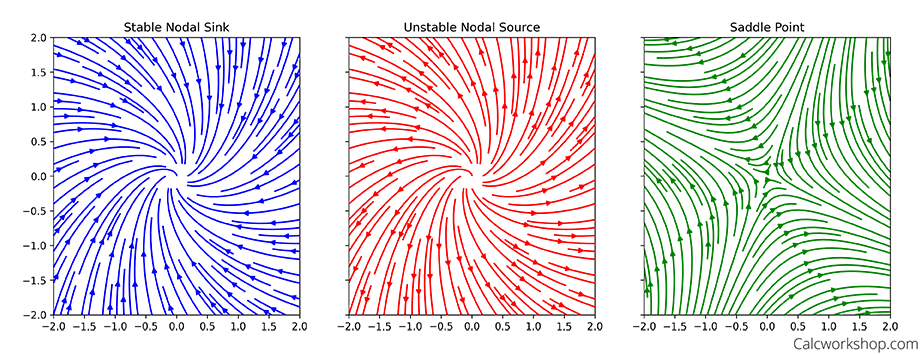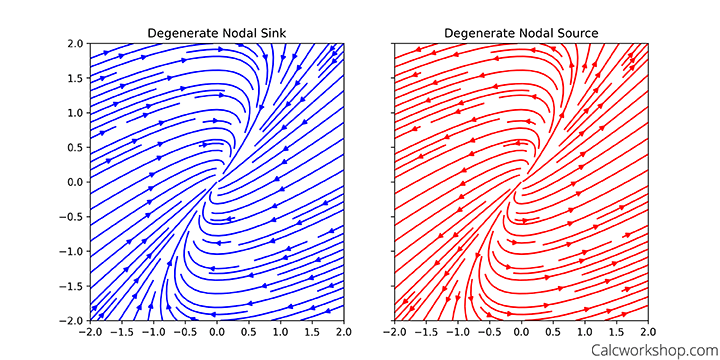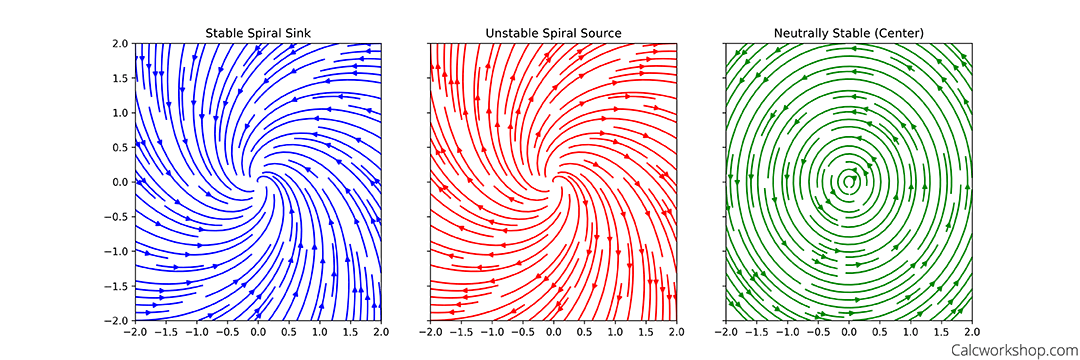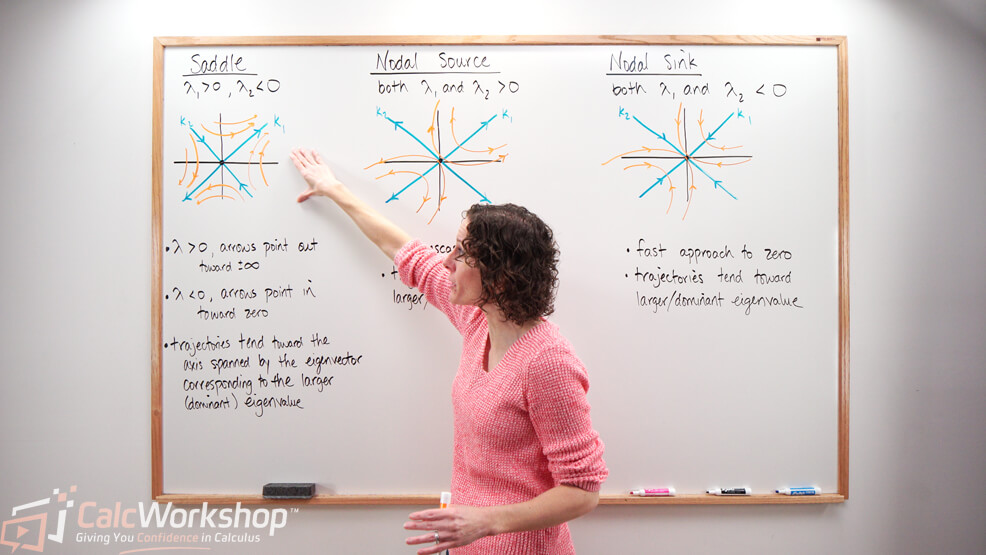Did you know that we can interpret the solution of a linear homogeneous systems as parametric equations of curves in the phase plane (xy-plane)?

Jenn, Founder Calcworkshop®, 15+ Years Experience (Licensed & Certified Teacher)
In fact, each curve is a called a trajectory, and the resulting graph depicting the solution of a system of differential equations is known as a Phase Plane Portrait of the system.
Let’s investigate.
From Eigenvalues to Trajectories
So, in our previous lesson we learned how to use eigenvalues and eigenvectors to write general and particular solutions for a system of differential equations.
Well, those eigenvectors actually describe straight line solutions to our system, and by plotting points we are able to graph a direction of motion known as Trajectories.
Inspired by Paul’s Online Notes, our ultimate goal is to sketch these trajectories in the phase plane, examining if the solution approaches the critical point or equilibrium solution as t increases to infinity.
Unlocking the Secrets of Eigenvalues
Alright, so this begs us to ask some fundamental questions.
- How do we find the eigenvalues of a linear system?
- And how do we use them to identify the nature of the solutions in the neighborhood of the critical point?
In other words, we want to ensure there is only one critical point
If
- where
Classifying Critical Points
And we classify the critical point of a linear system by determining the trace
Real Distinct Eigenvalues:
-
If both eigenvalues are negative
- then the critical point is a stable node
-
If both eigenvalues are positive
- then the critical point is an unstable node
-
If the eigenvalues have opposite signs
- then the critical point is a saddle point

Equilibrium Point Comparison: Stable Nodal Sink (blue), Unstable Nodal Sink (red), and Saddle Point (green) in 2D systems.
Repeated Real Eigenvalues:
-
If there are two linearly independent eigenvectors and the repeated eigenvalue is negative
- then the critical point is called a degenerate stable node
-
If there are two linearly independent eigenvectors and the repeated eigenvalue is positive
- then the critical point is called a degenerate unstable node
-
If there is a single linearly independent eigenvector and the repeated eigenvalue is negative
- then the critical point is called a degenerate stable node
-
If there is a single linearly independent eigenvector and the repeated eigenvalue is positive
- then the critical point is called a degenerate unstable node

Comparing Equilibrium Types: Degenerate Nodal Sink (left) and Degenerate Nodal Source (right).
Complex Eigenvalues:
-
If
- the solutions are elliptical spirals with motion toward the origin
- and the critical point is called a stable spiral point
-
If
- the solutions are elliptical spirals with motion away from the origin
- and the critical point is called an unstable spiral point
-
If
- the solutions are ellipses with the center at the origin
- then the critical point is called the center

Complex Eigenvalue Equilibria: Comparing Stable Spiral Sink, Unstable Spiral Source, and Neutrally Stable Center.
Putting It All Together: A Qualitative Approach
Rest assured, once you see it in action, the approach, classification, and resulting phase plane portraits will all make perfect sense.
Together, let’s:
- Use a qualitative approach to classify critical points
- Sketch graphs based on eigenvalues and eigenvectors
- Determine if critical points are:
- Stable or unstable saddle points
- Nodal sources or sinks
- Degenerate or improper nodal sources or sinks
- Centers or spiral sources or sinks
There’s a lot to unpack, so let’s jump right in!
Video Tutorial w/ Full Lesson & Detailed Examples

Get access to all the courses and over 450 HD videos with your subscription
Monthly and Yearly Plans Available
Still wondering if CalcWorkshop is right for you?
Take a Tour and find out how a membership can take the struggle out of learning math.